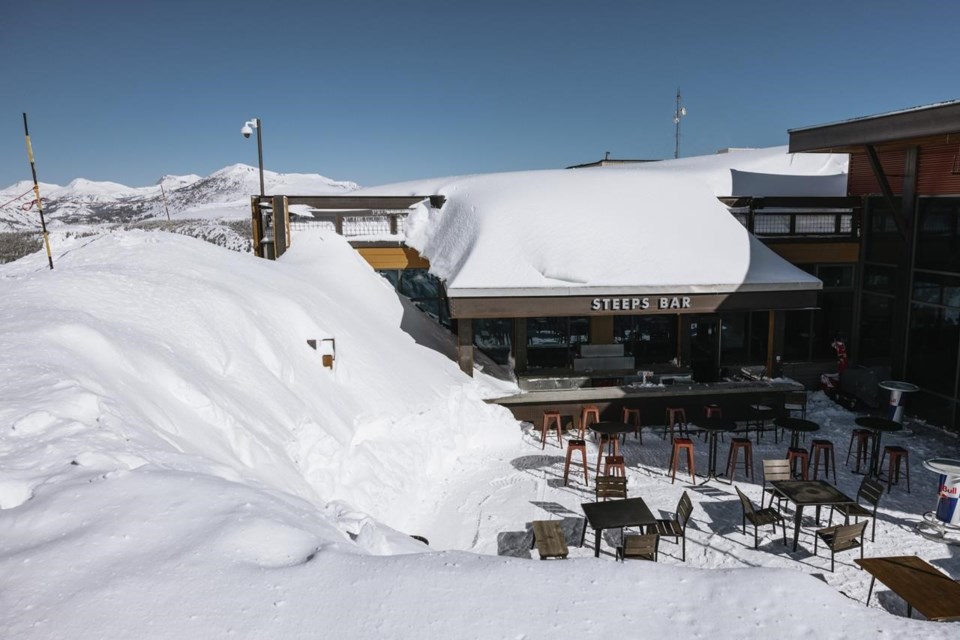LOS ANGELES (AP) — A cold low pressure system spinning off the coast of California sent bands of rain and snow across the state Wednesday, making travel difficult and adding to an epic mountain snowpack.
Forecasters said the storm was not as strong as the all winter, but that chains were required for vehicles on highways through the Sierra Nevada. A section of U.S. 395 on the eastern side of the range was closed because of the snowfall.
The San Francisco Bay Area was hit by gusty winds, hail and periods of heavy rain as multiple storm cells intensified quickly, the National Weather Service said. Flood advisories were issued in the afternoon for three counties south of San Francisco.
The Mammoth Mountain ski resort in the Eastern Sierra declared its snowiest season on after 28 inches (70 centimeters) of snow since Tuesday afternoon pushed season snowfall totals to 695 inches (17.6 meters) at its main lodge and 870 inches (22.1 meters) at the summit of the 11,053-foot (3,369-meter) peak.
“It's deep out there,” the resort wrote on its website.
Another foot (30 cm) or more of snow fell at resorts around Lake Tahoe, including 14 inches (35 cm) at Palisades south of Truckee. That resort is now within 11 inches (28 cm) of reaching its record of 701 inches (17.8 meters) and has announced plans to keep some slopes open until the Fourth of July.
The storm's effects were more modest in Southern California, where steady rain ended by afternoon and sunshine returned. But forecasters cautioned that there could be evening thunderstorms and overnight snow in the mountains as the very cold low pressure system moved down the coast.
California was three years into a drought, with dwindling reservoirs and parched landscapes, until an unexpected series of powerful and continued into spring. While causing widespread damage that forced the declaration of emergencies in dozens of counties, the storms also have raised reservoir levels and built an extraordinary Sierra snowpack, a significant source of California's water.
As of Wednesday, the water content of the snowpack was 234% of the April 1 average, a benchmark for its historical peak, according to the state Department of Water Resources.
The turnabout has allowed a , although Gov. Gavin Newsom has been careful to not declare the drought over.
California is expected to get additional precipitation by Saturday in the north and by Monday in the south. Forecasters said the system will be weaker than the current storm.
The Associated Press




